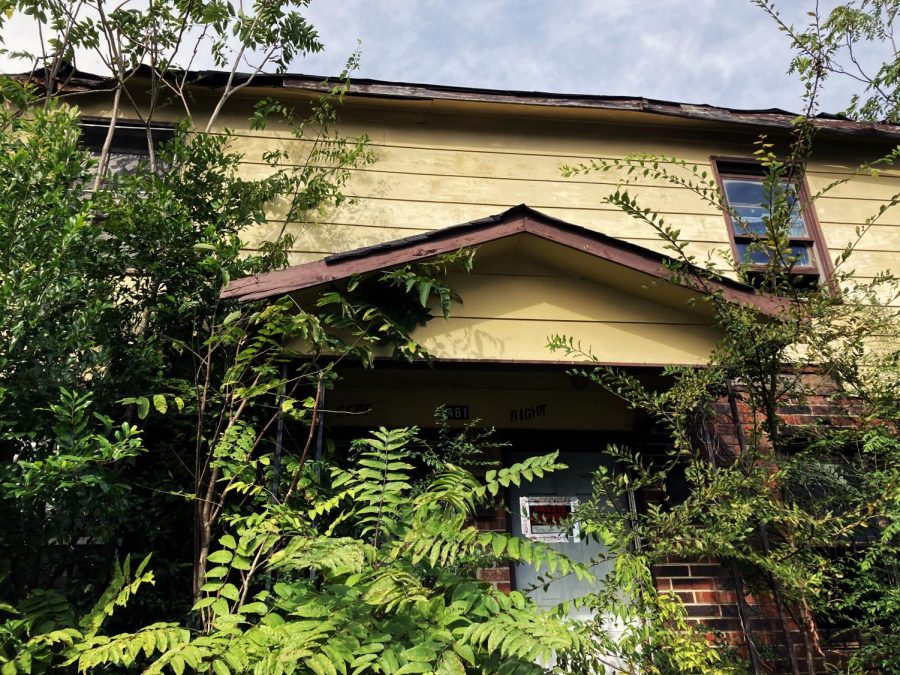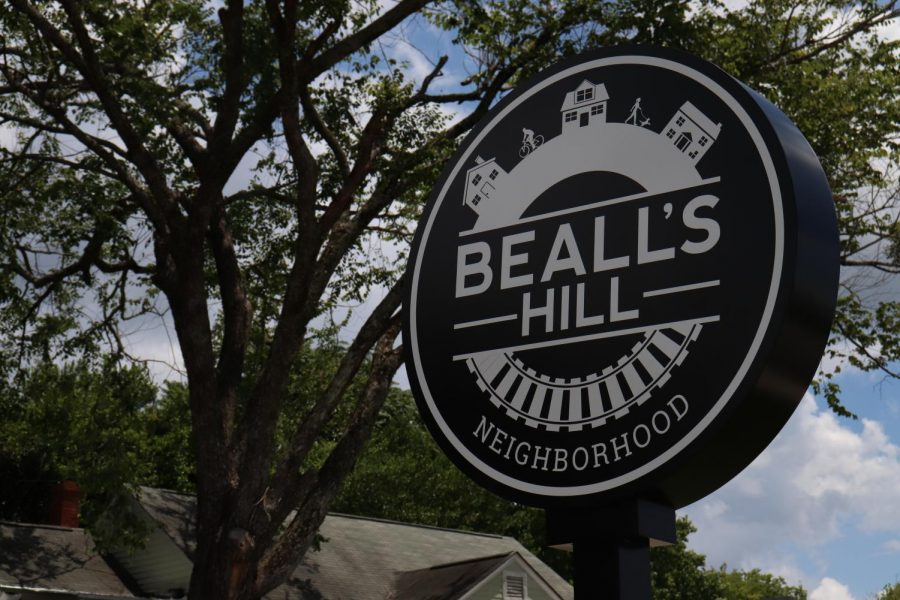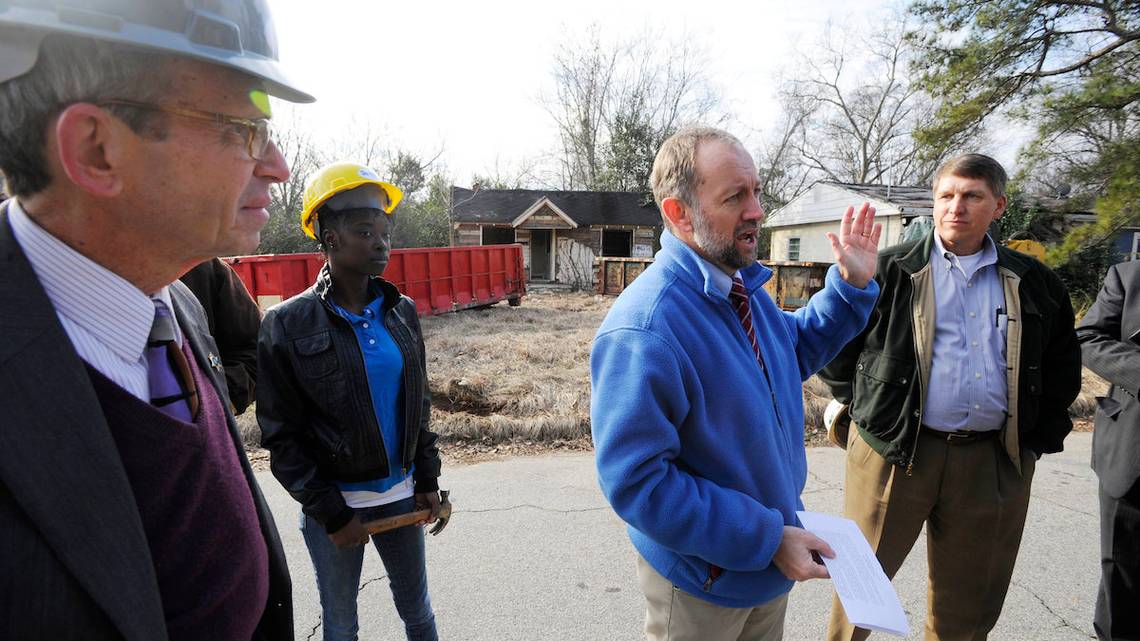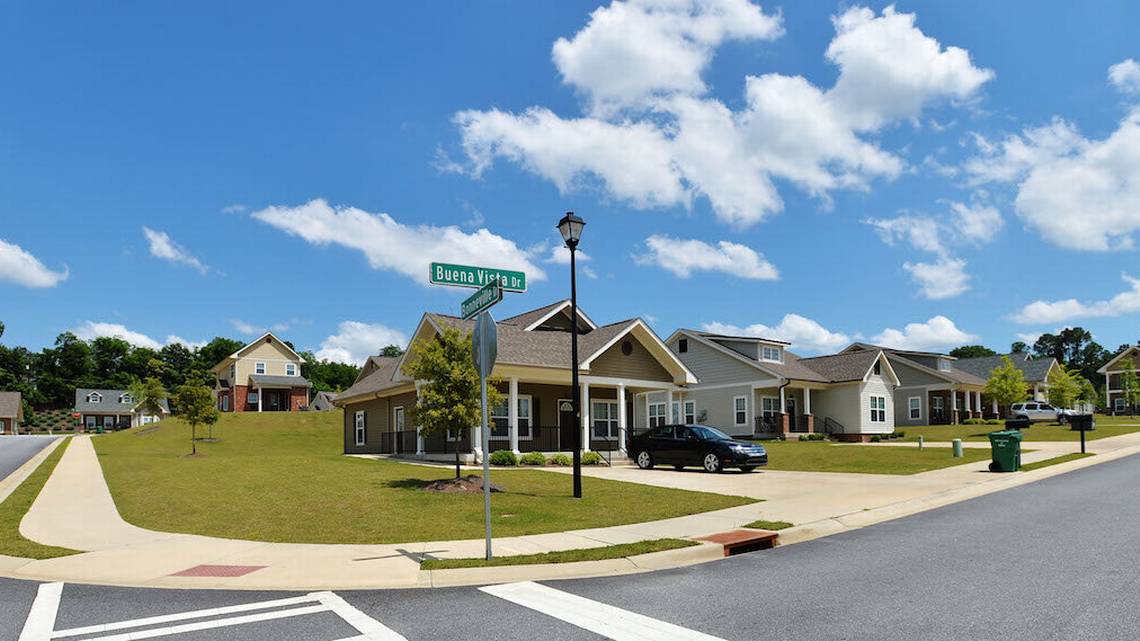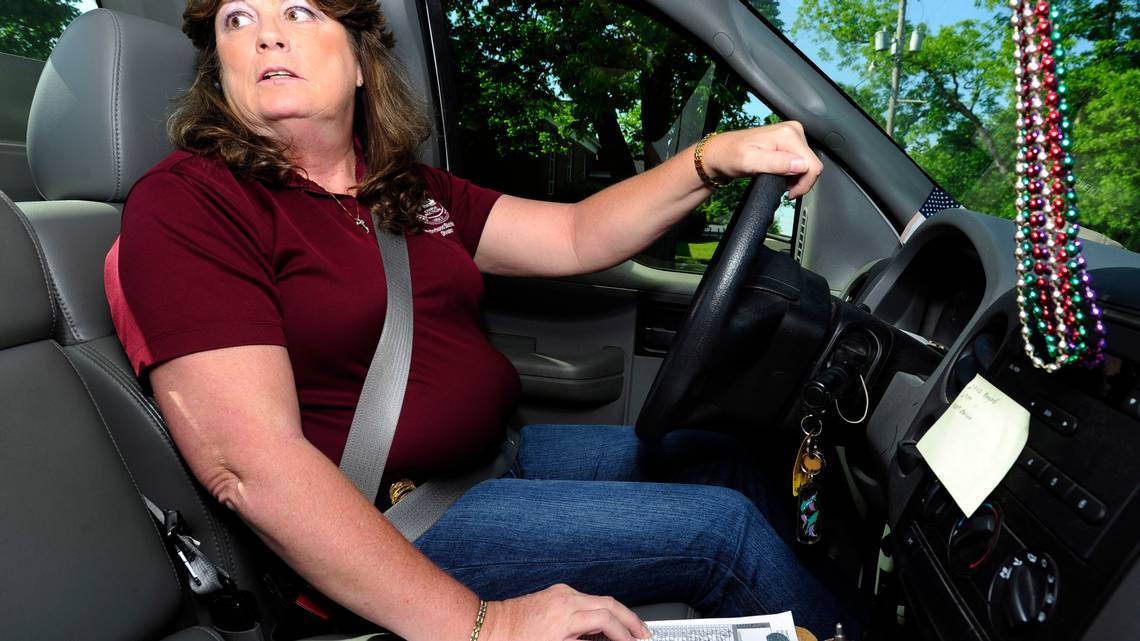Last October, the children of Beall’s Hill went trick-or-treating.
That might seem an unremarkable activity for Halloween in Macon, except that in previous years, the children from this city neighborhood near Tattnall Square Park didn’t go door to door seeking treats in their own neighborhood.
Despite millions of dollars in renovations and improvements made in Beall’s Hill since revitalization efforts began in 2001, there’s still a view by some that the area isn’t as safe as other parts of Macon, even though recent data show that violent crime is relatively low.
Residents there have actively worked to change how Beall’s Hill is perceived.
“We do have challenges here, but we’re all working together to make it better,” said Corrie Merricks, a lecturer at Mercer University who has lived on Calhoun Street with her husband and three children for nearly three years.
Matt and Elizabeth Harper are among the newest residents of Beall’s Hill. They moved into a restored historic home on Calhoun Street in mid-August. The Harpers moved to Macon with their two daughters, Lillian, 8, and Charity, 4, from Arkansas to teach at Mercer University.
“We wanted something walkable, where neighbors know each other and hang out outside,” Matt Harper said. “We’re a one-car family, so we couldn’t have a work commute. We didn’t look anywhere (else in Macon).”
Neighborhood residents Craig and Ellen Byron said Beall’s Hill has come a long way in the eight years since they moved into a restored and historic home on Ash Street.
During their first year there, they tried to throw a Halloween party for the neighborhood that didn’t go quite as well as they had hoped. Back in those days, the Byrons couldn’t even get a pizza delivered to their home because the restaurants feared for their drivers’ safety.
“The first year … a huge contingent of homeless people showed up for the free food,” Ellen Byron said. “To come from that to a place where our kids can grow up (safely), it’s really something special. It’s been a group effort.”
History
About $20 million in renovations in the Beall’s Hill neighborhood began in earnest in 2001 when Macon was awarded a HOPE VI grant and other state and federal money that was used in part to demolish the aging and unsightly Oglethorpe Homes public housing project and replace it with higher-quality, low-income housing.
In an opinion piece published in The Telegraph in August 2001, Mercer professor Peter Brown, one of the key figures in the efforts to revitalize Beall’s Hill, described the city’s declining tax base and the problems it presented to Macon’s long-term growth.
Brown described how the city put together a large partnership to make Beall’s Hill a pilot project to lead the way for other neighborhood redevelopment. But Brown also acknowledged that many people were skeptical that such positive change could happen in Beall’s Hill:
“Inertia and suspicion still threaten to stall progress toward redevelopment,” Brown wrote. “Can we work together to make it happen?” Thirteen years later, many of the partners and the neighborhood’s residents have answered Brown’s question with a collective “yes.”
“I think everyone would agree, Beall’s Hill has been one of the great successes in Macon,” Mercer University President Bill Underwood said.
With funding for an initial redevelopment study coming from the John S. and James L. Knight Foundation, the city, Mercer and the Macon Housing Authority partnered to begin the long process of redeveloping a crumbling area that was once one of Macon’s most prominent integrated neighborhoods.
Charles Watts, 83, has lived in several houses in Beall’s Hill going back to the 1940s. What started as a decent neighborhood gradually fell into decline, starting in the early 1960s. The criminal element moved in, and many law-abiding residents moved out.
“People started to come in and sell drugs,” he said. “The neighborhood started going down. Things started to get a little better, but then drugs came back in the ‘90s.”
Watts said he and his sister met with Brown when the community began showing interest in revitalizing Beall’s Hill.
“I said that if someone from New York was going to send their daughter to Macon (for college), then we were going to have to do something to get it cleaned up,” Watts said.
The work started with the razing of the 188-unit Oglethorpe Homes, said June Parker, chief executive officer of the Macon Housing Authority. Thanks to an investment of about $12 million that came from HOPE VI funds, tax credits and money from the city, the authority built 97 apartment units and 10 single-family dwellings where Oglethorpe Homes once stood. That development is called Tattnall Place.
“It’s had a tremendous impact on the community, a tremendous impact on the city,” Parker said. “We’ve been able to turn those units into mixed-income housing. It’s all about perception. The units are well-maintained. There’s a call in the market for those units, because there’s no stigma (living there).”
Carla Harden, who manages the property, said the residents who live there undergo credit and criminal background checks. The residents, she said, have taken a lot of pride in their neighborhood and have helped to maintain it. “
This was not such a good area, and now it’s very appealing,” Harden said. “It gives people the opportunity to have something nice. It gives them a sense of ownership. These (units) feel like homes rather than apartments.”
Parker said the success in redeveloping Beall’s Hill and other nearby neighborhoods has helped the housing authority develop a positive reputation as a developer, which helps secure funding for projects in other parts of the city.
The other partners contributed to fixing other parts of Beall’s Hill. The city rebuilt several houses with HUD funding, while Mercer devised an incentive program for its faculty and staff. That program provides $25,000 for a down payment in exchange for a five-year commitment to live in the neighborhood. Historic Macon also has been a big part of the process, securing historic tax credits for homes that can be rehabilitated and creating a revolving loan fund that has helped build or redevelop houses in Beall’s Hill.
Historic Macon has had so much success in Beall’s Hill that the Knight Foundation earlier this month added another $3 million in investments in the form of a grant and low-interest loan. In addition to adding money to the incentive programs, about $650,000 of the loan program will go to two recent initiatives — a façade-improvement program and an energy efficiency rebate to homeowners.
Beverly Blake, program director for the Knight Foundation in Georgia, said Beall’s Hill serves as a national model for neighborhood redevelopment.
“You can reclaim a neighborhood and enhance the fabric of a neighborhood in a way that allows neighbors to keep their homes,” Blake said. “It’s a way to reclaim the spirit of the neighborhood.”
The process hasn’t always been easy. The Beall’s Hill Redevelopment Corp., the original partnership to redevelop the neighborhood, dissolved in 2007 when the housing authority pulled out over questions about how funds were being handled. An audit that year noted that while some of the record-keeping was poor, there was no mishandling of funds.
Since then, the redevelopment corporation has been replaced with Historic Hills and Heights, a partnership involving the city, Mercer and Historic Macon that not only oversees redevelopment in Beall’s Hill but in nearby Huguenin Heights as well.
A long way to go
Even with all the effort that’s gone into Beall’s Hill, the work in the 32-block neighborhood is only about one-third finished.
Ethiel Garlington, executive director of Historic Macon, said the partnership has stuck to a plan that moves the redevelopment along, block by block. Starting at College Street, redevelopment mostly has moved in an eastward direction between Oglethorpe and Ash streets, as well as some development on Orange Terrace.
Garlington said the next phase of the plan will continue to push east to First Street, as well as crossing Ash to redevelop the area as far south as Edgewood Avenue through Telfair Street.
“It’s probably going to be at least five to seven years before it’s all done,” Garlington said. “One of the signs of success for us is when the private sector returns to the neighborhood so that we’re not the sole developer. We’ve had a mixed success with private development so far.”
One of the most notable private development efforts came from a company called GreenTec Homes, which tried to restore three homes using environmentally friendly technology. Ultimately, however, that firm went out of business, Garlington said.
The Byrons said sometimes the success of Beall’s Hill has worked to the neighborhood’s detriment because of developers and property owners who look at opportunities to make a quick buck. For example, they said, some developers have bought properties cheaply, then tried to redevelop them on the cheap before selling at a profit.
“Many ignored the plan that was put in place,” Craig Byron said. “They were folks who didn’t live here and without a clear understanding about what the plan was. … Some private developers have been real cheap. (The properties) are so low-end that they go straight to rental.”
Ellen Byron said some parents of Mercer students see the relatively inexpensive housing in the neighborhood as a win-win investment opportunity: They buy a house cheaply and fix it up for their children to live in while they are students, then try to either sell or lease the house once their children graduate. She said those sort of plans often haven’t worked out.
“You then see a lot of foreclosures, because the parents aren’t able to sell them,” she said. “That hurts the homeowners in the area.”
Gentrification comes at a price
The Byrons and others involved with Beall’s Hill also note that it’s important not to forget one of the key side effects that comes with any gentrification effort — driving property values so high through redevelopment that it prices out people who have lived in their home for decades. Those homeowners often can no longer afford the higher property taxes.
“You see older African-American families who have been living here for 50 or 60 years, and their taxes go up,” she said. “We have to find a mechanism for relief. If we are pushing people out of their homes, then Beall’s Hill is a failure.”
Many of the families that have moved into the neighborhood over the past eight years have done so because of the racial and socioeconomic diversity the neighborhood offers, Craig Byron said.
“We didn’t want to live in a place with people who only look like us,” he said. “If Beall’s Hill can achieve something that a lot of other cities fail to achieve by unblighting a neighborhood but also maintaining diversity, then it will be a unique achievement.”
Garlington said it’s an issue the partnership is working to address.
“Gentrification is a priority for us,” he said. “Having the area very diverse is what makes it so attractive. Our goal is to keep that diversity. We’ve talked about property tax freezes for senior citizens.”
The Byrons also said many longtime residents of other parts of Macon aren’t aware of the level of change that has gone on in Beall’s Hill. New residents of the neighborhood are more likely to be out-of-towners rather than people who already live in Macon looking to buy a new home.
Part of the problem may be that there’s still a perception of a high-level of crime in Beall’s Hill. However, most of the crime there is nonviolent, such as burglaries and car break-ins. According to the Bibb County Sheriff’s Office, there have been three rapes, five robberies and six aggravated assaults in Beall’s Hill from 2011 through last month.
“Crime has been dropping there,” said sheriff’s Lt. Amy Wheeler. “It’s not considered high-crime. The residents are very helpful in keeping us up to date. … The residents are very receptive to our involvement.”
The neighborhood is a far cry from where it once was, said Watts, the longtime resident. While there are still break-ins, he said, crimes involving drugs and prostitution have largely been expelled from Beall’s Hill.
“Some people don’t want no changes,” he said. “When they tore down Oglethorpe Homes, there was a preacher out here complaining that they were putting people out of their homes. Now, we reuse everything. It’s a big improvement. … The drug-addicted folks didn’t want changes. They wanted it to be nasty and rundown.”
Watts still says the neighborhood hasn’t had enough infrastructure improvements. He noted that the sidewalk ends at the intersection of Ash and Calhoun streets before it gets to his house. Watts said he thinks the city has favored white residents in making improvements.
However, Macon-Bibb County spokesman Chris Floore said $500,000 has been earmarked in the current budget to address infrastructure issues like that.
“We’ve seen the benefit of having infrastructure there, and we want to do something this year,” he said. “We absolutely want revitalization of these neighborhoods.”
Floore said the money will be spent on sidewalks and street lamps. Assuming Garlington’s timeline to finish Beall’s Hill of five to seven years is correct, it would mean Beall’s Hill would have been a work in progress for 20 years.
As Parker noted, that would mean it would be time to start making improvements to the original redeveloped properties once again.
“Is it complete? No, but we have made a difference,” she said. “Even with success, we can’t just say we’re successful and then walk away. We have to make sure the improvements stay in place so that in 10 or 15 years from now, people can’t say, ‘Oh, look at that blighted area.’ We have to make sure what we’ve done stays in place so that you don’t have a lot of empty homes get out of hand. That’s where vigilance has to come in.”




